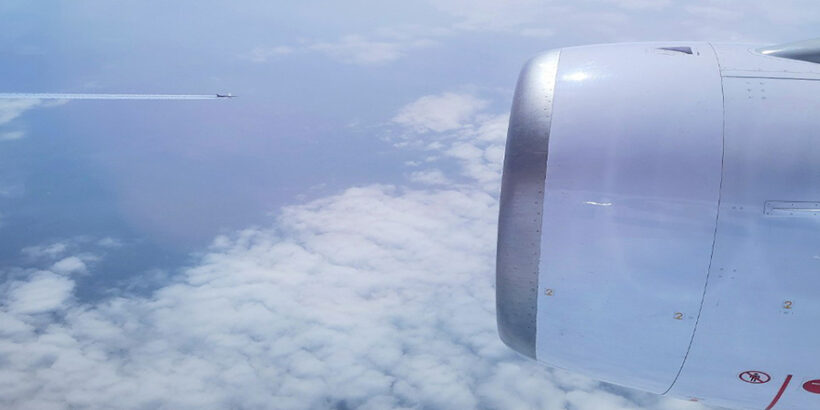All work on the “Russification” of the MC-21 aircraft is scheduled to be completed by the end of 2024. At the end of 2022 testing of the MC-21 with a wing made of Russian polymer composite materials and a PD-14 engine was completed, Rosaviatsiya (Russian Federal Air Transport Agency) issued an approval for making changes in the design of the airliner. Substitution of the remaining systems and units will follow this year when the fully “Russified” MC-21-310 aircraft will undergo certification testing.
At the same time now with the perspective perspective is studying the creation of a more spacious version of the airliner – for 250 passengers, said May 16 Deputy Prime Minister and Head of the Ministry of Industry and Trade of Russia Denis Manturov in an interview with TASS.
“…The study of various options for the development of the MC-21 family for the future, of course, is also underway. The work that is being done on the wide-body aircraft (CR929) has a planning horizon after 2030. I think that we need to work on several modifications on the basis of MC-21, including the version for 220-250 passengers,” said Denis Manturov.
Such an airliner may become the MC-21-400, which is being developed by the Yakovlev Design Bureau, a part of the Irkut corporation. Alexander Inozemtsev, Managing Director and General Designer of UEC-Aviatiadvigatel JSC, spoke about the work on the engine for this aircraft at the Army Forum in August 2022.
In the middle of May, IL PJSC and the Government of Voronezh Region signed a Letter of Intent, which envisages construction of a new building of the Centre of Specialisation for the manufacture of nacelles for PD-14 and PD-8 engines.
Under the agreement, the government of the Voronezh Region undertakes to construct a new building on the territory of the special economic zone on a site with a total area of over 67 thousand sq. m. for the organization of the Center for nacelle production. UAC will purchase the necessary equipment for the new production facilities, provide training and organization of production, train the necessary number of new specialists.
At the present time nacelles production is located on the territory of Voronezh Aircraft Plant. Considering the production plans for the SSJ-New and MC-21 aircraft a large-scale expansion of the production facilities on the new premises is required. VASO is a historical supplier of engine nacelles for civil and transport aircraft engines.
* * *
Sergey Chanushkin, Navigator’s Technical Director, told Russia Today that the company has started transferring the first samples of the Airborne Collision Avoidance System (TCAS) for the MC-21 and SSJ-New aircraft to Irkut Corporation. The equipment implements the functions of TCAS II and issues recommendations to the crew on eliminating a conflict situation in flight.
The first TCAS from the St. Petersburg Institute of Aviation Instrument Engineering can be installed on 73361 (registration number MC.0013). It is currently being modified in Irkutsk into the MC-21-310rus version – a design with all Russian components: the PD-14 engine, Russian avionics, and Russian aircraft systems and assemblies. The modification is to be completed by April 15, 2024. Initially the aircraft was to be handed over to the Rossiya airlines in the MC-21-300 modification with a wing made of Russian composites.
* * *
Irkut Corporation in co-operation with the Southern Russia State Polytechnic University (Novocherkassk) has created the first domestic carbon fibre stacker robot. It will replace foreign equipment and will be used in the serial production of the “black” wing of the MS-21 aircraft. All key elements, including software and process control systems, are made in Russia. The equipment will allow Russia not to depend on foreign suppliers and will ensure the rhythmic production of up to 36 MC-21 aircraft per year.
A prototype of the robot has been put into commercial operation at AeroComposite’s Moscow laboratory. “We have fully tested the domestic technology, achieving high quality, speed and reliability of the system. The next aim is the scaling of this solution for the serial production of the composite wing structures of MC-21 and increase of the volume of aircrafts production,” the First Deputy Director General of Irkut Corporation – General Director of JSC AeroComposite Anatoly Gaidanskij declared.
He added that with implementation of the Russian robotic complex, the civil aviation industry of Russia is becoming import-independent not only in terms of materials, but also in terms of basic technological equipment.
* * *
Certification tests of the MC-21 continue at the Gromov LII airfield in Zhukovsky. In May, aircraft 73051, 73053 and 73055 took to the skies. Aircraft 73053 tested the algorithms of the automatic control system (ACS), and 73055 performed long-duration flights (non-stop Zhukovsky-Omsk-Zhukovsky) to evaluate the fuel consumption characteristics under operational conditions.
This aircraft was also used for certification flights to determine ground noise levels. These tests had already been carried out before, but now, as Zhukovsky explained to us, several more flights had to be made in connection with the introduction of noise reduction measures.
Aircraft 73051 flew on May 3 to collect information on the strength of the engine pylons to expand the certification limits of the MC-21-310 version. And on 16 May it flew to Ulyanovsk for repainting. This machine, as well as board 73056, was planned to participate in the MAKS-2023 air show. Despite media reports that the air show was cancelled, the plans for repainting in the updated livery have not changed.
A total of three MC-21 aircraft flew a total of eight flights in May 2023, for a total of 28 hours and 43 minutes.



